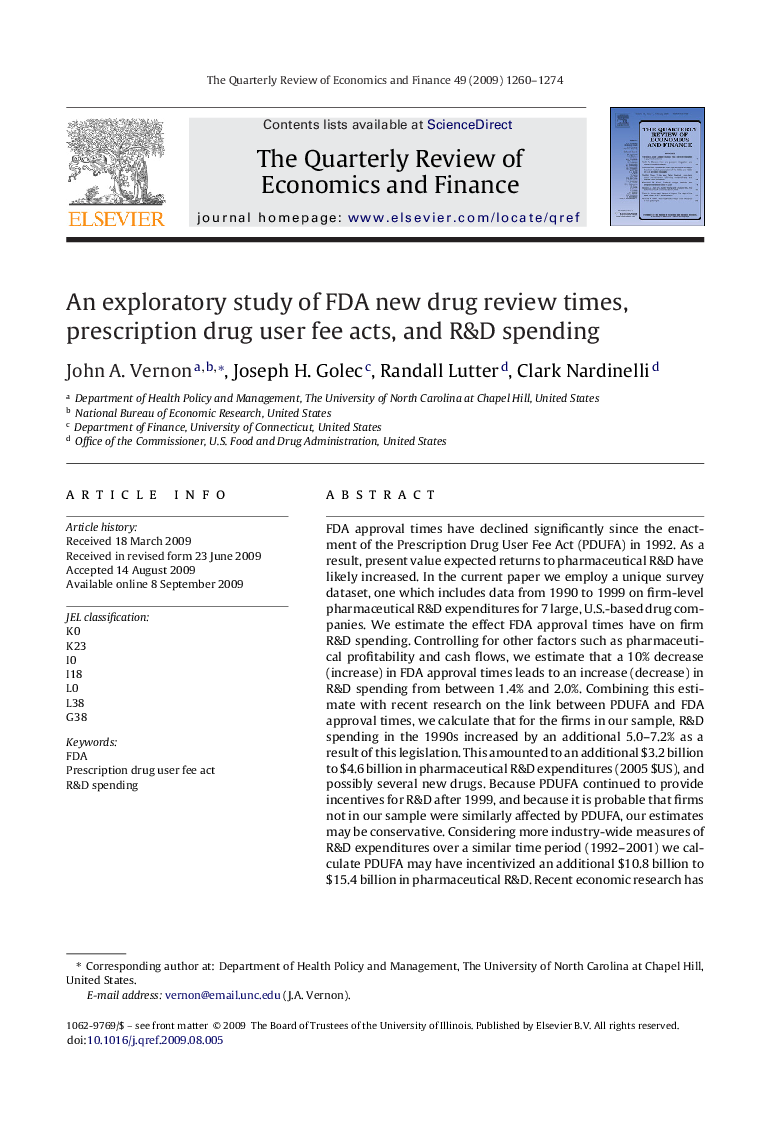| Article ID | Journal | Published Year | Pages | File Type |
|---|---|---|---|---|
| 983296 | The Quarterly Review of Economics and Finance | 2009 | 15 Pages |
FDA approval times have declined significantly since the enactment of the Prescription Drug User Fee Act (PDUFA) in 1992. As a result, present value expected returns to pharmaceutical R&D have likely increased. In the current paper we employ a unique survey dataset, one which includes data from 1990 to 1999 on firm-level pharmaceutical R&D expenditures for 7 large, U.S.-based drug companies. We estimate the effect FDA approval times have on firm R&D spending. Controlling for other factors such as pharmaceutical profitability and cash flows, we estimate that a 10% decrease (increase) in FDA approval times leads to an increase (decrease) in R&D spending from between 1.4% and 2.0%. Combining this estimate with recent research on the link between PDUFA and FDA approval times, we calculate that for the firms in our sample, R&D spending in the 1990s increased by an additional 5.0–7.2% as a result of this legislation. This amounted to an additional $3.2 billion to $4.6 billion in pharmaceutical R&D expenditures (2005 $US), and possibly several new drugs. Because PDUFA continued to provide incentives for R&D after 1999, and because it is probable that firms not in our sample were similarly affected by PDUFA, our estimates may be conservative. Considering more industry-wide measures of R&D expenditures over a similar time period (1992–2001) we calculate PDUFA may have incentivized an additional $10.8 billion to $15.4 billion in pharmaceutical R&D. Recent economic research has shown that the social rate of return on pharmaceutical R&D is very high; therefore, the social benefits of PDUFA (over and above the benefits of more rapid consumer access) are likely to be substantial.
